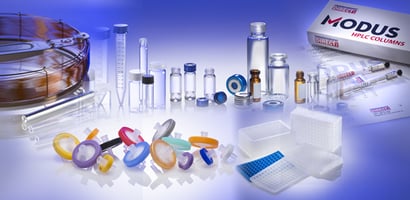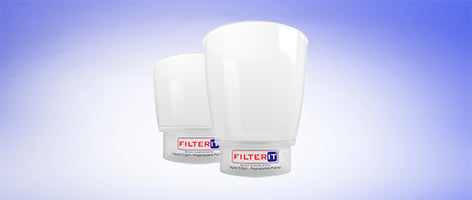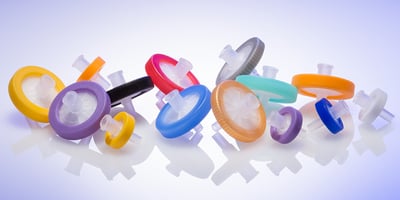Introduction Chromatography consumables are essential components in analytical workflows, enabling...
The Essential Role of Solvent Safety Caps in Chromatography Labs
In the dynamic environment of a chromatography laboratory, where solvents are frequently changed and experiments are run continuously, one might question the necessity of solvent safety caps. After all, if the bottles aren't sitting for long, what's the harm? However, the importance of solvent safety caps extends far beyond just health and safety regulations; they are crucial for maintaining solvent integrity and ensuring the accuracy of your data.

Preserving Solvent Integrity
Recent research has shed light on a startling fact: up to 2% of the mobile phase volume can change over a mere 8-day period when proper safety caps are not used. This evaporation of volatile components, along with the contamination from ambient molecules, can significantly alter the properties of the mobile phase. Such changes can lead to the degradation of data quality, potentially compromising the validity of your results.
Solvent safety caps serve as a barrier, preventing these detrimental effects. By using them, you're not just complying with health and safety protocols—you're also enhancing the reproducibility of your data. Moreover, these caps are a simple and cost-effective solution that can prolong the life of your mobile phases, ultimately saving your budget from unnecessary solvent replacements.
Ventilation Is Not Enough
A well-ventilated laboratory is, without a doubt, essential for the well-being of its occupants. However, even the best ventilation systems may not fully eliminate the subtle odours of organic solvents. Scientists spending hours next to analytical instruments may develop headaches or grow accustomed to these smells, failing to notice their presence. This latent exposure can be more harmful than one might realize.
By fitting solvent bottles with safety caps equipped with efficient filters, you can drastically reduce the presence of organic and acidic odours. These caps offer an additional layer of protection, safeguarding both the health of laboratory personnel and the consistency of experimental data.
Aqueous Phase Products and Health & Safety Risks
While aqueous phase products may seem less hazardous than their organic counterparts, they still pose significant health and safety risks in the lab. Accidents such as solvent spillage and overflowing HPLC solvent bottles are not uncommon, especially in labs where instruments are shared among multiple users. Neglecting the responsibility of monitoring waste solvent bottles can lead to serious consequences—the first sign of trouble often being a floating waste canister in a pool of spilled solvent.
This scenario presents two immediate hazards: the inhalation of toxic solvent vapors and the physical danger of slipping and falling. Implementing the use of solvent safety caps can help mitigate these risks by containing spills and reducing vapor emissions, thereby creating a safer work environment for everyone.
Conclusion
The question of whether to use solvent safety caps should not be one of convenience but rather one of necessity. These caps are indispensable tools in the pursuit of scientific accuracy, data reproducibility, and laboratory safety. Investing in solvent safety caps is investing in the reliability of your chromatographic analyses and the well-being of your laboratory staff. Don't let the frequent changing of solvents in your lab be an excuse to compromise on safety and quality—choose solvent safety caps for peace of mind and superior results.
See the Chromatography Direct range of Solvent Safety Products >>



